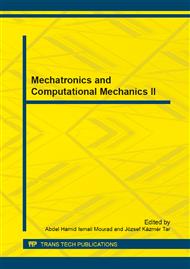p.81
p.88
p.95
p.100
p.105
p.111
p.117
p.121
p.130
Design for Disassembly Based on Substance-Field Analysis
Abstract:
As a part of sustainable product design, design for disassembly is critical for maintaining competitiveness of manufacturers. The conflicts between disassembly capability and functionality and reliability need to be addressed innovatively and effectively. This article proposes a method to combine functional analysis and substance-field(S-F) analysis adapted from TRIZ to solve such complex conflicts. First, problems of current design that hinder the disassembly capability of products are identified. Second, functional and cause analysis are carried out for the technical system to transform conceptual description into practical description for components in the technical system. Last, a solution for improving the disassembly capability of products is proposed based on the structural model obtained from S-F analysis. This method is used to improve the disassembly capability of couplings in automotive transmissions, and proven to be effective and feasible in discovering an innovative solution.
Info:
Periodical:
Pages:
105-110
Citation:
Online since:
February 2014
Price:
Сopyright:
© 2014 Trans Tech Publications Ltd. All Rights Reserved
Share:
Citation:


